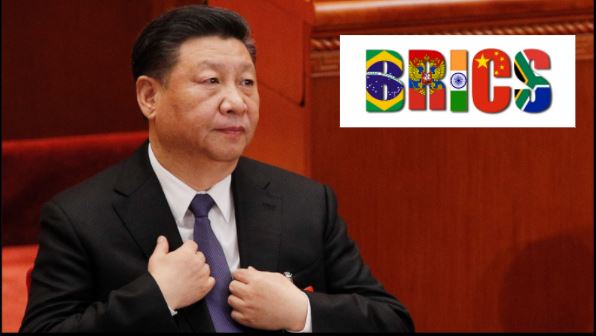China’s ambitions to challenge a US-led world order are not a secret. It is known that every big Chinese diplomatic effort is ultimately aimed at weakening the US Dollar’s hegemony as a global currency and at the same time establishing a parallel regime to the Bretton Woods Institutions- the IMF and the World Bank. One such Chinese effort is the BRICS, an intergovernmental organisation comprising Brazil, Russia, India, China and South Africa.
Beijing had high hopes with the BRICS, but things haven’t exactly gone its way. While the relevance of the BRICS was always under the scanner, now its futility is becoming clearer. Geopolitical conflicts and Sino phobia within Brazil, India and Russia are threatening the very existence of BRICS, while South Africa’s economic collapse is rendering its participation irrelevant.
To be fair, the BRICS was never as widely reported as the Belt and Road Initiative (BRI), perhaps because the BRICS never really took off. However, Beijing which led efforts to create the BRICS after the 2008 recession bets heavily on the intergovernmental organisation to achieve its superpower ambitions.
Only last year China’s State-run media outlet, CGTN published a report titled, “The Importance of BRICS to China”. The CGTN report stated that while the BRI expresses its outward ambitions, “China is also heavily invested in BRICS.” The Chinese State media outlet also described the BRICS as an “antidote to the G7 and other U.S.-dominated institutions.”
The top items on China’s agenda were again described by CGTN as “the need to find a new global reserve currency.” The Chinese State media outlet also suggested, “It is also in China’s strategic interest to have a less U.S.-centric global system; forging economic alliances with the world’s largest emerging global economies will certainly help in this endeavour.”
In the Chinese perception, BRICS was a shortcut to new China-led world order. This also led to Beijing forming two institutions- the New Development Bank (NDB) and the Asia Infrastructure Investment Bank (AIIB).
However, the BRICS was a non-starter from the very beginning. Unlike the post-World War II institutions, the BRICS wasn’t based on shared political or social values. While the US-led world order is based on democratic and liberal values, the Indian and the Brazilian democracies often came into conflict with Chinese Communism.
India and Brazil went along with BRICS only because of the regimes that couldn’t take a firm policy stand on China at that time. Within India, the UPA governments, for example, were never very keen on challenging Chinese hegemony. But now things have started changing.
The Modi government in India and the Jair Bolsonaro regime in Brazil interpret China as an adversary, rather than a partner. Within India, Prime Minister Modi has shown the ability to take on the China challenge. And in Brazil, Jair Bolsonaro won the Brazil Presidential polls only based on his anti-Beijing agenda. Today, Jair Bolsonaro’s son Eduardo Bolsonaro and other Brazilian lawmakers are leading the charge against China.
Moreover, Russia- the only country within the BRICS that somewhat resembles China’s authoritarian characteristics, is itself having far too many issues with China. While Moscow claims to share a “strategic axis of convenience” with Beijing, it faces several challenges from China from Beijing’s growing influence in Central Asia to Chinese claims over the Arctic and Beijing’s fetish for copying Russian defence designs.
The only other member in the BRICS- South Africa has fallen into a recession and is more or less irrelevant in the present world order.
Furthermore, any chances of a BRICS revival have been curtailed by Chinese belligerence against India in Ladakh and territorial claims in the Russian Far East, including the city of Vladivostok.
Over the recent past, therefore, the BRICS has virtually crashed on a larger global level. Events like G-7 expansion and Trump’s ambitions to include both India and Russia in an expanded G-7 have dashed Beijing’s hopes of challenging American hegemony. Similarly, India has become a QUAD partner which consists of US and US allies- Japan and Australia. Finally, China is nowhere near its ambition of internationalising Yuan and challenging the dominance Dollar.
Sooner or later, China would realise that the BRICS have fallen apart and so have China’s big power display ambitions. Consequently, a China-led world order remains a far-fetched dream.































